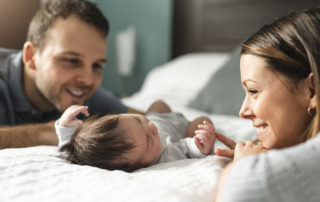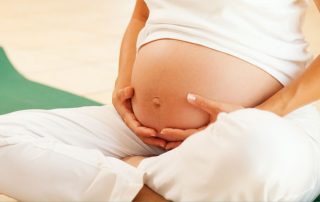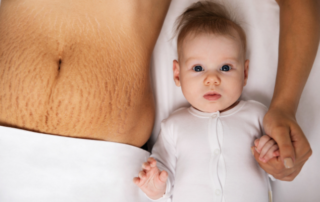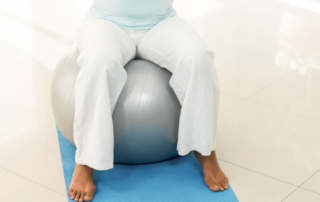Postnatal
 The postnatal period begins immediately after childbirth when a woman’s body begins to return to its post-pregnancy state. Just as your beautiful body travelled the journey of pregnancy, now it begins a new journey – one of recovery that is not without challenges.
The postnatal period begins immediately after childbirth when a woman’s body begins to return to its post-pregnancy state. Just as your beautiful body travelled the journey of pregnancy, now it begins a new journey – one of recovery that is not without challenges.
During the postnatal period, women can often feel as though they don’t know their body anymore, and have many questions and concerns about the changes occurring. Fear not. In this section of the PBB site, we offer articles and stories to answer your questions and allay your fears.
Our articles include How to Create the Perfect Postnatal Plan, The Postnatal Woman: What to Expect, and Incontinence- The silent epidemic. We also do some myth-busting with articles on Pelvic Floor Myths and unrealistic expectations of Bouncing Back Postpartum.
Do you have a story about your postnatal journey that you would like to share? We are always looking for new content for this page and nothing supports a new mother more than the words of someone who has been there (or is there). If you have a postnatal story to share or would like to suggest a topic that you’d like to read more about, please email Pregnancy Birth and Beyond.
Postnatal Articles
Postpartum hair loss – are you going bald, and what can you do to stop it?
Worrying about postpartum hair loss is the last thing you need when you’re adjusting to new motherhood. On top of learning to breastfeed in public, use a baby carrier, and get bub to sleep, why are you losing hair? Could you be going bald? And what can you do about it? How common is postpartum hair loss? If bub is two to four months old and you’re now losing hair by the handful, you’re not alone. About 1 in
How to Create the Perfect Postnatal Plan
Have you created a postnatal plan to help you ease into motherhood? Just as you wouldn't embark on birth without discussing your preferences, don't leave the period after birth to chance either. Giving some thought to the first weeks after a baby is born can help them run smoothly and with more joy. From visitors to chores to postnatal care, here are some things to jot down in your postpartum plan. Boundaries for visitors Everyone wants to share your
Contraception Choices
In Australia, in the past ten years, contraceptive choices for women have increased significantly. Women continue to seek a wide range of contraceptive options and they increasingly want to be fully informed and in control of their fertility. Research indicates that women’s primary concerns when choosing contraception are that it is effective and has minimal side effects. Generally, the more effective contraception is the greater the potential for side effects. Ultimately every woman must make their own decision as
Incontinence- The silent epidemic
For many women, urinary incontinence is a clear problem without a clear cause or solution. The fact that one in three women who have ever had a baby wet themselves indicates the extent of this problem. Urinary incontinence is distressing and embarrassing and can impact significantly on women’s lives. The silence that surrounds urinary incontinence results in many women feeling isolated and reluctant to seek help. The severity of urinary incontinence varies hugely between women. Some women find they
Pelvic Floor Myths
After birth, your midwife may explain the importance of pelvic floor muscles and check for diastasis (the splitting of the abdominal muscles) and/or you may receive a visit from a physiotherapist. Pelvic floor health may be followed up by the GP at the routine 6-week post-natal check. Information may be included in the new mum course running at the Maternal Child and Health Nurse. Or then again, it may not. One-third of all women who have children will suffer
Pelvic Floor Exercises
By Michelle Wright Pelvic floor exercises are an important part of your fitness program. The pelvic floor is a sling of muscles stretching across the floor of the pelvis. Attaching to your pubic bone at the front, the pelvic floor muscles stretch across the floor of your pelvis and attach to the coccyx (the tail at the end of your spine) at the back. Openings from your uterus, bladder and bowels all pass through your pelvic floor. Doing pelvic
Mums are Wonderful
Book review by Jane Palmer At first glance, I thought what a lovely book and wouldn't it make an ideal gift for a new mother. Natalie Green presents beautiful imagery of babies, mothers and fathers. The book is designed to be picked up and put down with one hand. It is short, easy to read and humorous in parts. My major concern with this book is its promotion of bottle feeding. There are three images in the book depicting
The Postnatal Woman: What to Expect
The information available to women once they have a baby is sadly lacking. All the focus of information is mainly on pregnancy and birth. The postnatal period begins from birth and ends when the baby is six weeks of age. The postnatal period is a very special time when women undergo the transition into motherhood. During pregnancy, it can be very difficult to comprehend just what being a mother will be like. However, once the baby is born women
Wondering what to do with your placenta?
“Well you also have the option to encapsulate your placenta and ingest it.”........ blank stares, open mouths, nervous giggles, or simply no registration at all. This is the normal response I see when talking about the third stage of labour in my calmbirth® classes. I have been encapsulating women’s placentas for over two years now and what once seemed to me like sacred “ooga booga” has now reached the brink of mainstream and almost all of the families I
Bouncing Back Postpartum
The pressure in society upon women to have the ‘ideal’ figure is great. Every week leading media outlets release magazines full of pictures of celebrities sporting flat stomachs, toned muscles and winning smiles. While as a group we can lay claim to a firm belief that the female body is beautiful in any form, there are still many women who look at these images and consider their own bodies inferior by comparison. Pregnant and postpartum women are not immune
A Beautiful Body Project
Jade Beall is an amazing woman with an amazing mission. Rebelling against the world of air brushing and digital enhancement that proliferates our society, she seeks to shine a light on genuine beauty and the stories behind it. While photographers create glorious images of bellies ripe with babies, how many come back afterwards to photograph the beauty of the post birth body - a beautiful body that nourished a new and unique human for some 40 weeks. When Jade
The Terrifying Softness of Motherhood
Parenting books promising to save our sleep (and tame our toddlers) and the yummy mummy movement have something in common that we, as first-time parents should know. Both contemporary trends capitalise on women’s fear of motherhood. Or that’s what I think, anyway. As a second-time parent, there is something now peculiar to me about how frightened we all are of the transforming effect of motherhood. Why are we so afraid of losing control, of being softened, of giving in,
Young Mums Risking Pelvic Floor Health
Pregnant women and young mums are ignoring their pelvic floor health, despite almost three out of four experiencing urinary leakage, new research has found. A study of 1000 Australian mums and mums-to-be found that despite being in a high-risk category for developing incontinence, 98 per cent failed to do the daily recommended level of pelvic floor exercises. The Continence Foundation of Australia, which commissioned the research, today launched a national campaign to raise awareness of the importance of prevention
ABO Incompatibility in Newborns
ABO incompatibility is a common and generally mild type of haemolytic disease in babies. The term haemolytic disease means that red blood cells are broken down more quickly than usual. Due to the increased breakdown of red blood cells, jaundice, anaemia, and in very severe cases can cause death, can result. During pregnancy ABO incompatibility may occur if: 1. The mother and baby's blood types are incompatible 2. Different blood types come into direct contact with each other and,














